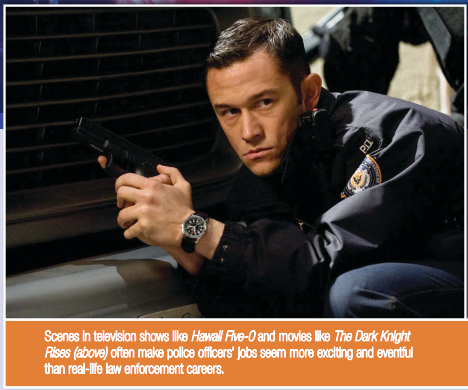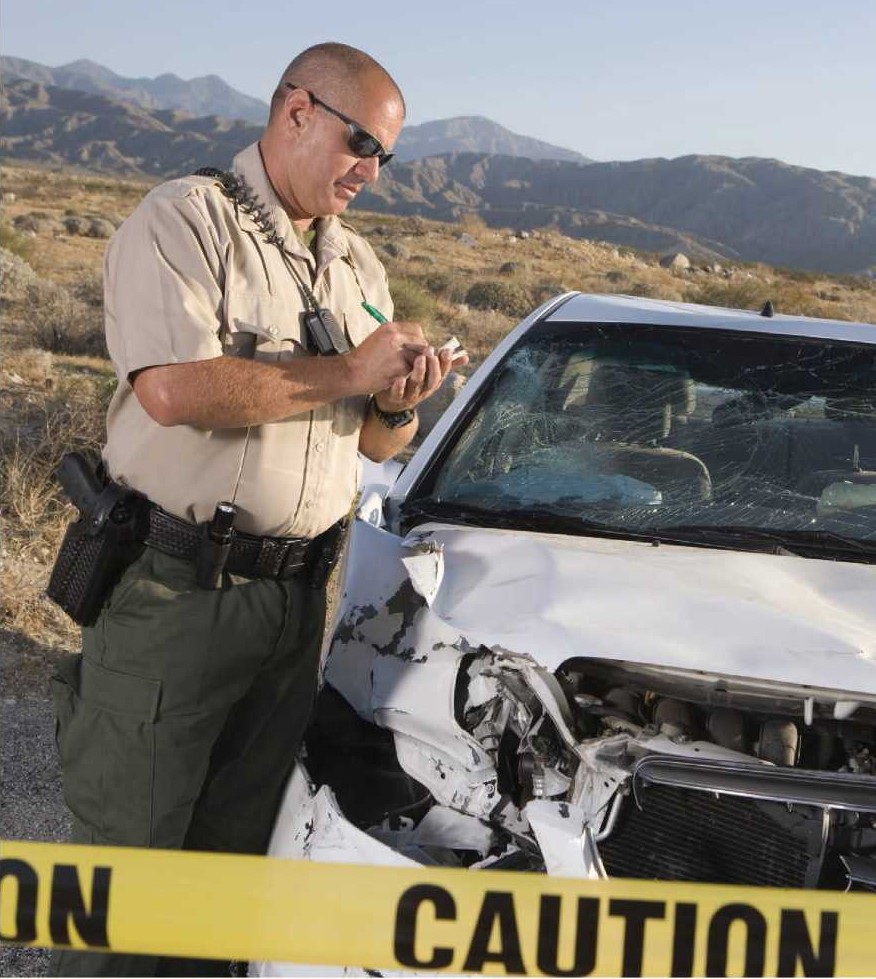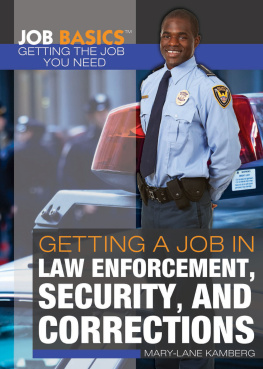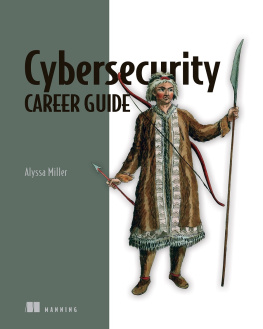Published in 2014 by The Rosen Publishing Group, Inc.
29 East 21st Street, New York, NY 10010
Copyright 2014 by The Rosen Publishing Group, Inc.
First Edition
All rights reserved. No part of this book may be reproduced in any form without permission in writing from the publisher, except by a reviewer.
Library of Congress Cataloging-in-Publication Data
Kamberg, Mary-Lane, 1948.
Getting a job in law enforcement, security, and corrections/by Mary-Lane Kamberg.1st ed.New York: Rosen, c2014
p. cm.(Job basics: getting the job you need)
Includes bibliographical references and index.
ISBN 978-1-4488-9605-9
1. Law enforcementVocational guidanceJuvenile literature.
2. CorrectionsVocational guidanceUnited StatesJuvenile literature. I. Title. HV7922 K36 2014
363.2'02373
Manufactured in the United States of America
CPSIA Compliance Information: Batch #S13YA: For further information, contact Rosen Publishing, New York, New York, at 1-800-237-9932.
A police officer chases down a bank robber on foot, rescues a kidnap victim, and solves a cold case murder...all before lunch. A corrections officer uses brains and brawn to stop a prison riot. A security guard thwarts a burglary ring in a warehouse, rounding up six suspects all by himself.
These are examples of a typical day for police officers, corrections officers, and security guards on television or in the movies, not in real life.
Jobs like these are rewarding and challenging. And sometimes they are exciting.They can also be dangerous,demanding, and frustrating.
A typical day as a police officer starts with a shift meeting or roll call. The supervising officer shares information and makes assignments. The next step is to check out the squad car for any damage or mechanical problems. During routine patrol, the officer watches for suspicious activity. The dispatcher sends officers on a variety of calls. The officer may be sent to take a stolen bicycle report, check on someones welfare, or, yes, occasionally respond to an alarm at a local bank. A police officer deals with many different people from different cultures and backgrounds. He or she must protect and serve them all.

On a typical day, a corrections officer must be ready for anything. A calm, quiet morning can turn into a noisy disturbance, sometimes without warning. Each day the officer meets with the entire shift staff. This meeting is known as the read off." Supervisors assign where each will work. This area of responsibility is known as the officers post. Most posts are for housing units. Others include the places new inmates are admitted or released. Officers learn to treat their charges with respect, authority, and patience.
A security officers typical day varies depending on the employer and type of work. Some work at a desk in a building lobby. They may check for identification or inspect packages coming into the area. Others patrol buildings, inside and out. Still others monitor closed-circuit televisions at casinos or corporations. These jobs may sometimes be exciting or even hazardous. However, most of the time, the goal is prevention of harm to persons, buildings, and personal or company property. A security officer may be asked to give directions, administer first aid, or give advice about security risks. He or she is the first barrier against workplace violence.
To land a job in any of these criminal justice fields, applicants must know the required education, physical fitness, and special training necessary and how to get them. They must be able to find openings and know how to apply for jobs. Such skills include writing a resume and cover letter and preparing for a job interview. Once they land a position, they need to know how to succeed in the field by adding to skills and knowledge and taking promotion exams. Lets take a look at how to get hired in these fields.
D o you have what it takes to be a police officer? Or work in security? Or keep order in a jail?
You might choose a criminal justice career in law enforcement, security, or corrections. Requirements for these jobs vary. For one thing, state laws differ. So do the needs of the agencies that hire people for these jobs.
Where do you look for such jobs? And what do you do to land one? First take a look at some of the choices.
Is Law Enforcement for You?
Police officers have dangerous, high-stress jobs. They meet criminals and crime victimssometimes in life-threatening situations. They write traffic tickets and accident reports. Police officers must stay alert at all times. They might walk a beat. Or operate a patrol car. Or motorcycle. Or helicopter. And they record everything in official reports. Often, they testify in court.Their jobs put demands on the body and mind.

One task assigned to police officers is traffic accident investigation. The required reports help insurance companies settle disputes for damages. Sometimes the officers appear in court to describe what they saw.
Police officers usually work eight-hour shifts five days a week. The shifts rotate. That includes days, evenings, and the middle of the night. It also includes weekends and holidays. All twenty-four hours of the day. Benefits vary. Police officers wear uniforms. They usually get a uniform allowance. (Public and private detectives wear civilian clothes.) Benefits usually include medical and dental insurance, as well as a retirement plan. Some places offer early retirement choices.
As their careers move forward, some police officers become detectives to investigate crimes. They work for individuals, law firms, or private companies. They collect evidence and talk to witnesses and suspects. Some become private detectives. They may check someones background or look for a missing person.They gather facts about financial matters or personal issues.
Minority Hiring
The first police officers in the United States were white males. In 1892, the city of Brooklyn, New York, hired the first African American police officer. In the early 1970s, fewer than 1 percent of police officers were women, according to Police-Officer-Pages.com.
In 1972, the U.S. Supreme Court ruled that the 1964 Civil Rights Act applied to cities. Police departments had to hire without regard to race or gender. Since then the number of women and minorities in police work has grown. According to Police-Officer-Pages.com, 9 percent of police officers in the late 1990s were women. In 2011, that number had grown to 17 percent, according to the Statistical Abstract of the United States. And in 2006, the U.S. Department of Justice Statistics said minorities made up 24 percent of all police officers (that had increased from 15 percent in 1987).





















